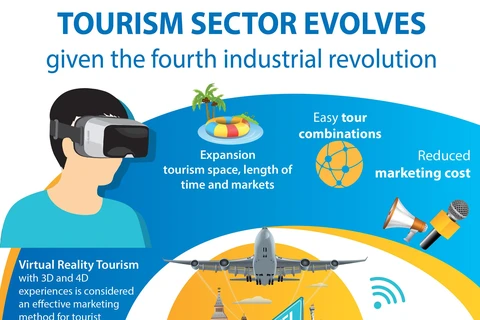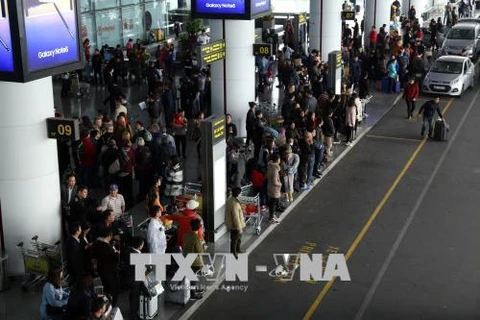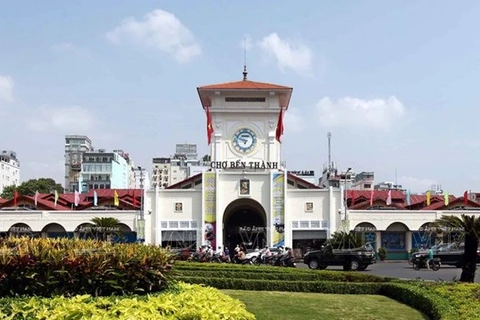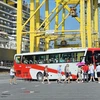Hanoi (VNA) – Experts have suggested that Vietnam’s tourism sector should diversify its products, not focus on only some major markets and create imprints right on flights to the country.
Although the number of international tourists to Vietnam has strongly increased over the past years, the growth rate has shown sluggish trends, experts said.
Showing sluggish trends
The Vietnam National Administration of Tourism (VNAT) unveiled at a conference held in the central city of Da Nang on August 16 that foreign visitors to Vietnam jumped from 7.9 million in 2015 to 15.5 million last year, representing an annual average growth rate of 25 percent.
The pace is the highest in the world as compared with the global average of 5.8 percent and 6.1 percent recorded in the Asia-Pacific region during the 2015-2018 period, the VNAT said, citing statistics of the World Tourism Organisation (UNWTO).
In the first seven months of this year, Vietnam welcomed nearly 9.8 international visitors, up 7.9 percent year-on-year.
China, the Republic of Korea, Japan, Taiwan (China), the US and Russia were Vietnam’s biggest sources of tourists. The top ten markets made up 83 percent of the country’s total foreign arrivals and 78.2 percent of accumulative revenue generated from serving them.
The VNAT attributed the rise to direct air routes between Vietnam and markets in North East Asia and South East Asia, along with trade promotion activities and economic, cultural and sport exchange programmes.
Besides, Vietnam has launched various attractive tourist destinations and products, and upgraded infrastructure in service of tourism.
However, the agency admitted that the growth rate of international visitors to Vietnam has shown sluggish signs as those from China dropped up to 2.8 percent year-on-year, and Australia, also down 1.2 percent.
Nguyen Quang Trung, head of the planning and development department of Vietnam Airlines, said the national flag carrier has continuously expanded its operation to satisfy demands of both domestic and foreign tourists.
Currently, Vietnam Airlines is operating 100 domestic and international routes, he said, adding that the carrier has partnered with other airlines worldwide and expanded services to another 95 destinations.
Vietnam Airlines joined SkyTeam – a global airline alliance whose 20 members provide access to an extensive global network of 16,609 daily flights to 1,074 destinations in 177 countries – in June 2010, helping it expand the operational network and increase its share in other continents, Trung noted.
He said the aviation sector contributed 79 percent of international tourists to Vietnam; roads, 20 percent; and sea routes, 1 percent, respectively. Over the past decade, Vietnam Airlines carried 60 million passengers, accounting for 35 percent of total foreign visitors to the Southeast Asian nation.
‘Conductor’ needed in foreign tourist attraction
Experts said the tourism sector needs a ‘conductor’ to attract more foreign vacationers. Over the past years, Vietnam Airlines has coordinated with the VNAT and local tourism departments to promote its destinations.
The carrier will continue to expand its network to Europe, America and North East Asia, organise tourism promotion events and team up with big travel agencies to promote Vietnam’s tourism in major markets.
To ensure sustainable tourism development, especially the number of foreign tourists, Vietnam’s tourism sector should not focus on only several markets but expand to others in case the major ones ‘fall ill’ due to impacts of economic downturns, Trung suggested.
Vietnam’s tourism sector aims to receive 17.5 – 18 million foreign tourists and 85 million domestic visitors in 2019, raking in total revenue of 700 trillion VND (30.17 billion USD).
The VNAT and the Department of E-commerce and Digital Economy under the Ministry of Industry and Trade have signed a cooperation agreement on applying advanced technologies and e-commerce to support the tourism sector’s development.
At present, online platforms for travel booking such as Airbnb, Agoda, Booking are strongly developed.
The cooperation between the two agencies is expected to improve the competitiveness of domestic e-commerce trading floors, helping to better ensure interests of visitors when they use tourism services provided on online platforms./.

























